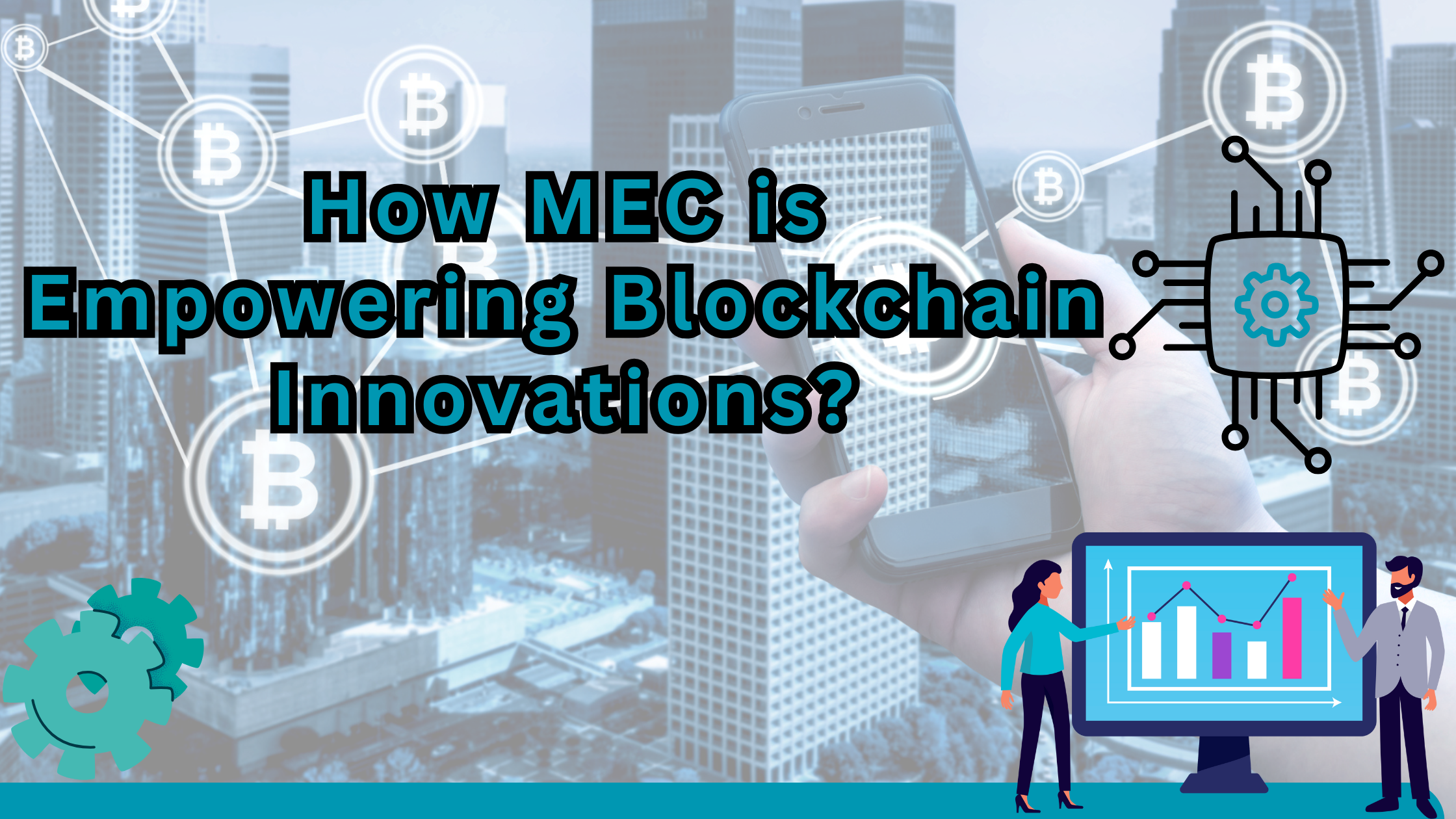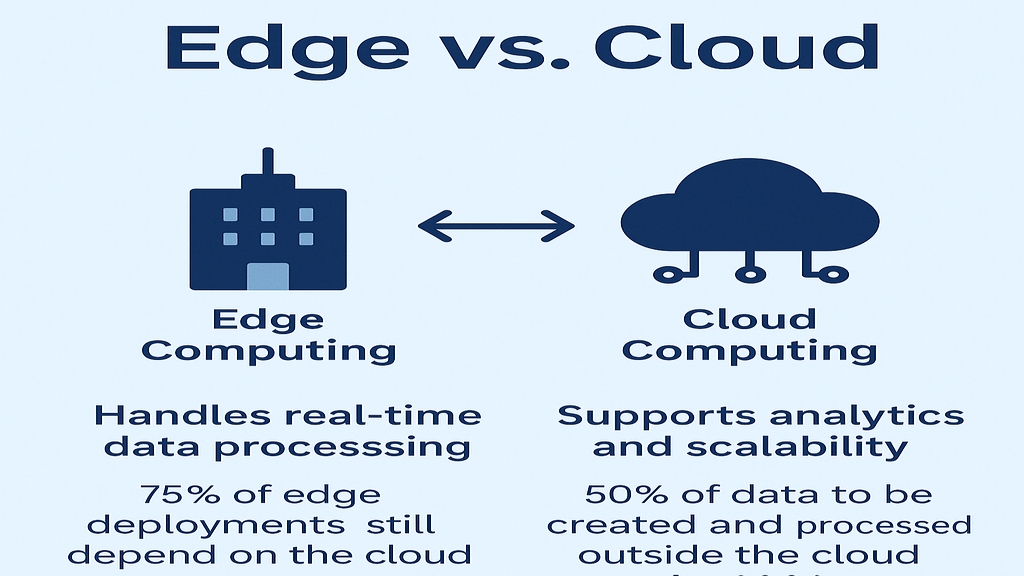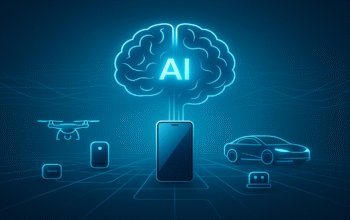Two technologies of revolution in the changing landscape of digital life—Mobile Edge Computing and blockchain—are now coming together to reshape industries and tackle age-old challenges in a decentralized system. By leveraging ultra-low-latency features from MEC and the security and transparency offered by blockchain, businesses may achieve unprecedented efficiency, scalability, and innovation that would otherwise not be achievable. Let’s dive into how Mobile Edge Computing is driving blockchain innovations and why this synergy is pivotal for the future of decentralized applications, or dApps, and services.
Covered Contents
ToggleUnderstanding Mobile Edge Computing (MEC) and Blockchain
What is Edge Computing?
Mobile edge computing, sometimes referred to as multi-access edge computing, places computer resources closer to the end user at the network edge. It lowers latency and speeds up data processing for applications like the Internet of Things, augmented reality (AR and driverless cars while guaranteeing real-time responses.
What is Blockchain?
Blockchain is a decentralized technology of a ledger that will assure immutable record-keeping that is secure. From more than just the currency of cryptocurrency, applications can provide a strong solution in managing supply chains, identity management, and smart contracts.
The Requirement of Interconnection
Though blockchain offers unmatched security and transparency, it faces significant challenges in scalability and latency. Mobile Edge Computing mitigates these limitations by offering decentralized processing power closer to the user, thereby improving network efficiency and transaction time.
How MEC Empowers Blockchain Innovations
Improving Blockchain Scalability
Blockchain networks can be very slow due to the significant computational power required for algorithms such as proof-of-work (PoW) consensus mechanisms. MEC distributes a network of edge nodes that can offload at least some of this immense computational burden.This setup creates less network congestion and higher speeds in validating transactions as it opens the way toward high-performance blockchain systems.
Reducing Blockchain Transaction Latency
Traditional blockchain networks rely on centralized or far-flung data centers, leading to latency issues. MEC minimizes these delays by processing blockchain transactions at edge nodes closer to end-users. Applications needing real-time performance, such as financial trading or IoT device monitoring, will particularly benefit from these capabilities.
Improving Energy Efficiency
Energy consumption is a very essential concern for blockchain systems. MEC optimizes the usage of resources by balancing tasks across edge nodes. Reducing the need for continued streaming of data to distant servers reduces and makes blockchain operations more sustainable and energy-conscious.
Security in IoT Devices with Blockchain
IoT devices introduce vulnerability. Data breaches and unauthorized access are just some of those vulnerabilities. Integrating Blockchain with MEC makes the Edge Node ecosystem very secure through validation and encryption of data transactions to ensure tamper-proof data exchange with instantaneous threat detection at the Network Edge.
Check it out: How Mobile Edge Computing Enhances IoT Performance
The Enabling of dApps
Decentralized applications rely highly on blockchain for their core functionalities, but they require fast and efficient processing to ensure seamless user experiences. The low-latency capabilities of MEC enhance the performance of dApps by hosting them closer to users. This synergy allows for smoother interactions in applications like gaming, supply chain management, and decentralized finance (DeFi).
Real-World Applications of MEC-Enabled Blockchain
Smart Cities
In smart cities, blockchain provides secure and transparent data management, while MEC allows for real-time processing of applications such as traffic management, energy distribution, and public safety. For example, blockchain-based electric vehicle charging stations can use MEC for instant payment validation and usage tracking.
Supply Chain Management
Blockchain’s immutability assures that supply chain records stay tamper-proof; the MEC accelerates the processing of data at several places in the chain, therefore enhancing traceability, reducing fraud, and increasing operational efficiency.
Healthcare
Medical Edge Computing and Blockchain enable secure, real-time patient data access. By bringing the processing closer to healthcare facilities, edge nodes deal with it, thus having blockchain ensure data integrity, access control, accelerating speed, and safer decision-making.
Challenges and Future Directions
Challenges
While the advantages are immense, MEC and blockchain integration also come with challenges, such as:
Interoperability: Seamless communication between MEC infrastructure and blockchain networks.
Security Risks: Protecting edge nodes from cyberattacks.
Cost: High initial investment in MEC infrastructure.
Future Directions
Advancements in MEC and blockchain will overcome these challenges through standardization, enhanced security protocols, and cost optimization. Emerging use cases in 5G networks, metaverse applications, and autonomous systems will further fuel innovation.
Conclusion
Mobile Edge Computing is revolutionizing blockchain, overcoming its intrinsic limitations, and unleashing its full potential. Another name for mobile edge computing is multi-access edge computing. Computing resources are placed closer to the end user at the network’s edge. It lowers latency and speeds up data processing for the Internet of Things, augmented reality, and driverless car applications, and it responds to them in real time.



